The oldest of Kyoto’s Big Three Festivals is the Aoi Matsuri on May 15 (the others are the Gion Matsuri and the Jidai Matsuri). Aoi means hollyhock, once thought to have protective power, and the festival originated in the sixth century as a means to appease angry deities at a time of bad weather, bad harvests and pestilence.
The festival is a joint event of the two Kamo shrines, Kamigamo and Shimogamo, which predate the establishment of Kyoto in 794. So ancient and so important was the festival that in the past when mention was made of ‘matsuri’, it was presumed that the reference was to Aoi. It’s mentioned too in a famous incident involving Lady Rokujo in The Tale of Genji (c.1004).
There are several colourful pre-events in the days leading up to the big parade on May 15, one of which was the famous Yabusame (horse archery) which took place yesterday at Shimogamo. Today was misogi shinji, the purification rite of the Saiodai (an unmarried woman representing the medieval Sai-in, an emperor’s daughter appointed virginal head of the shrine). Together with 40 attendants all dressed in Heian-era costume, she offered a hitogata to the purifying Mitarashi waters – and what follows is a photographic account.
(The Saio-dai, incidentally, is chosen from Kyoto’s leading tea schools and is aged around twenty. She wears the twelve-layered kimono (junito hitoe) of Heian nobility. Her headpiece is said by John Nelson in Enduring Identities to resemble the crowns of early shamanic rulers, made of branches with plum blossom and held in place by half-discs representing sun and moon. The tree branches may reflect himorogi shamanism, while the sun and moon symbols speak of Taoism and yin-yang.)
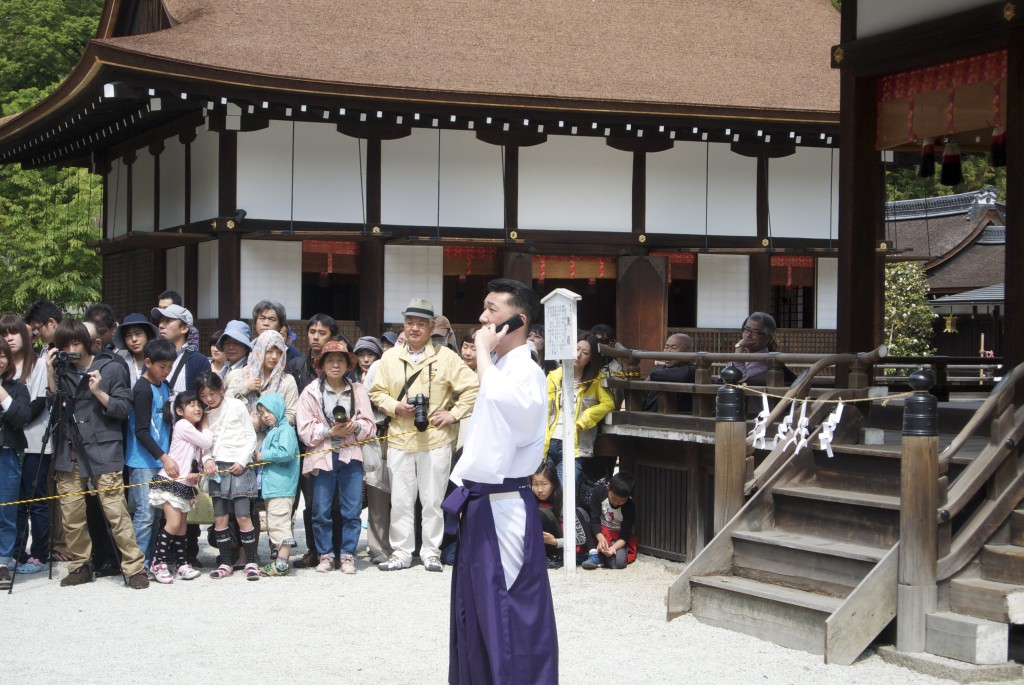
Waiting expectantly – and checking by Heian-era mobile if everything is okay
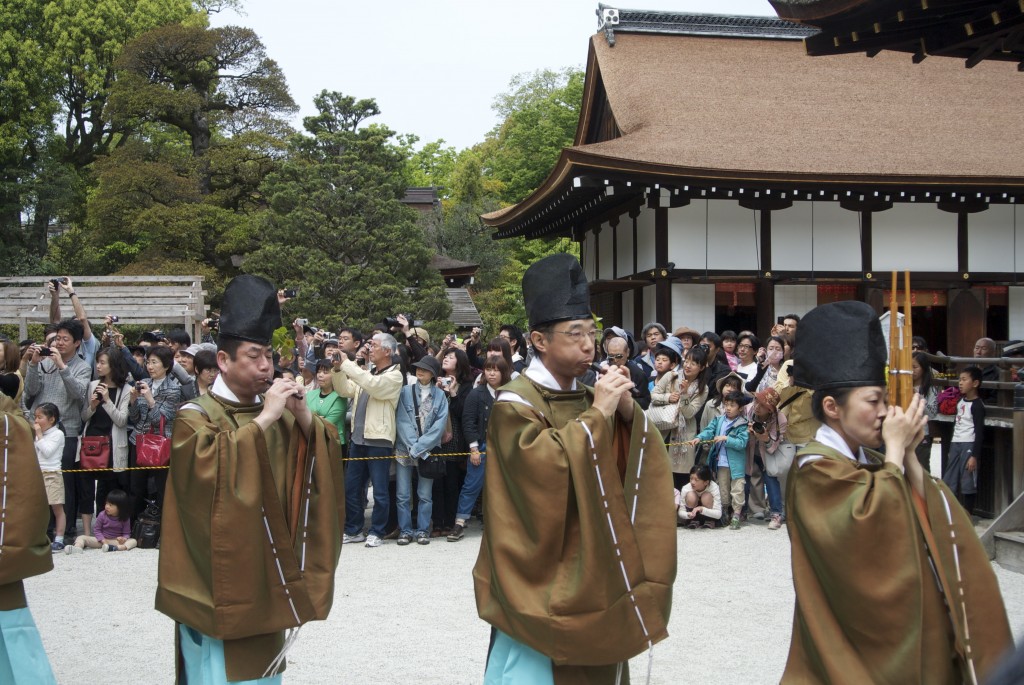
Gagaku musicians at the front of the procession to set the tone and smoothe the way
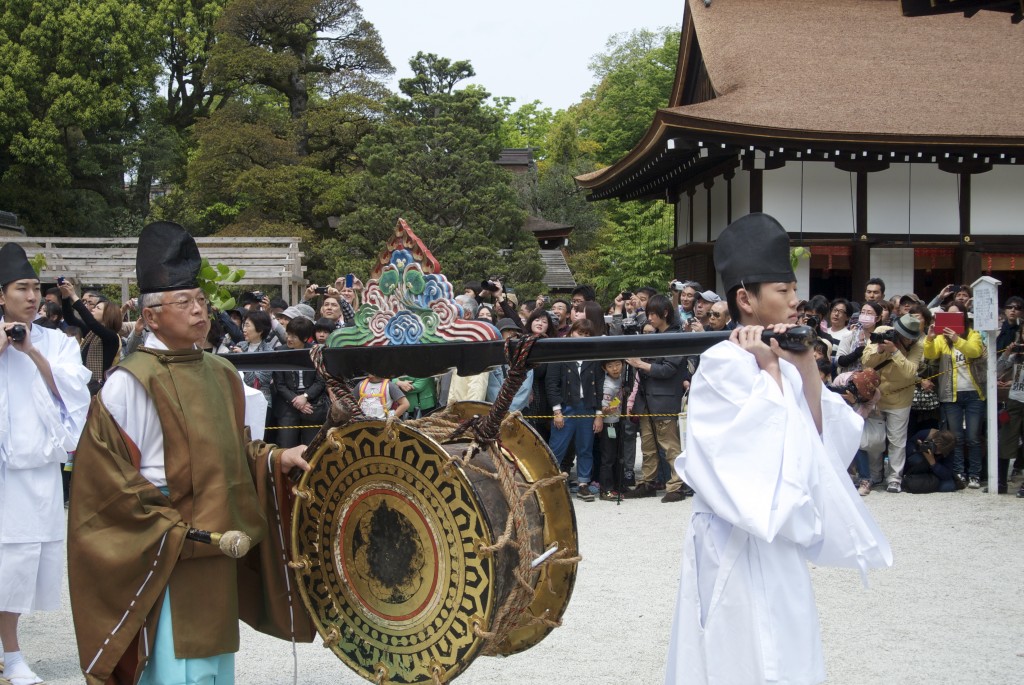
complete with drum....
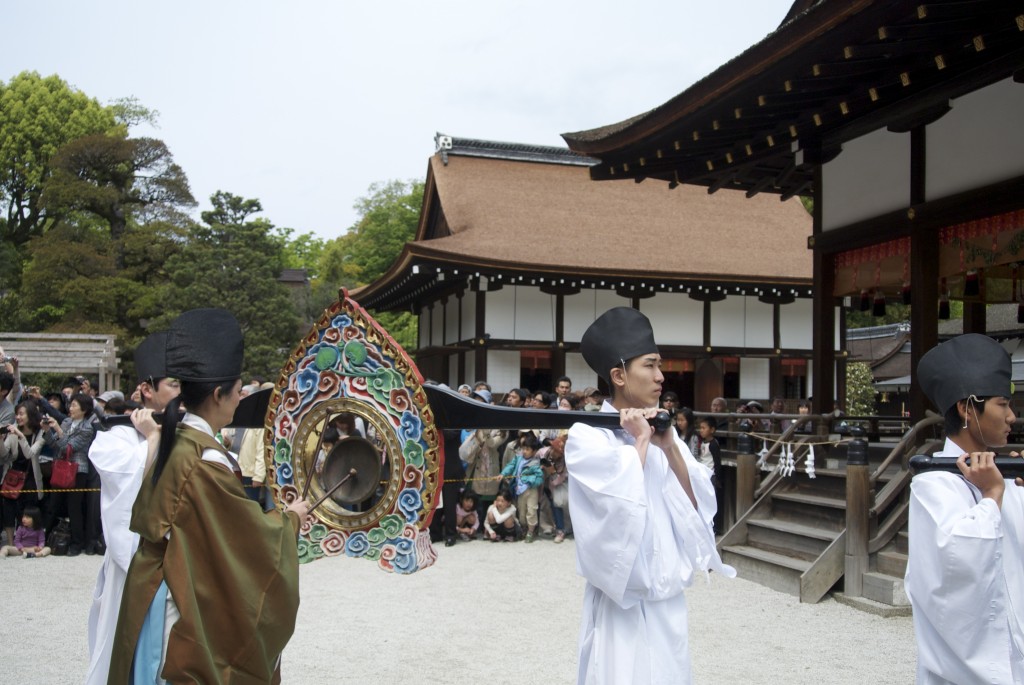
...... and gong
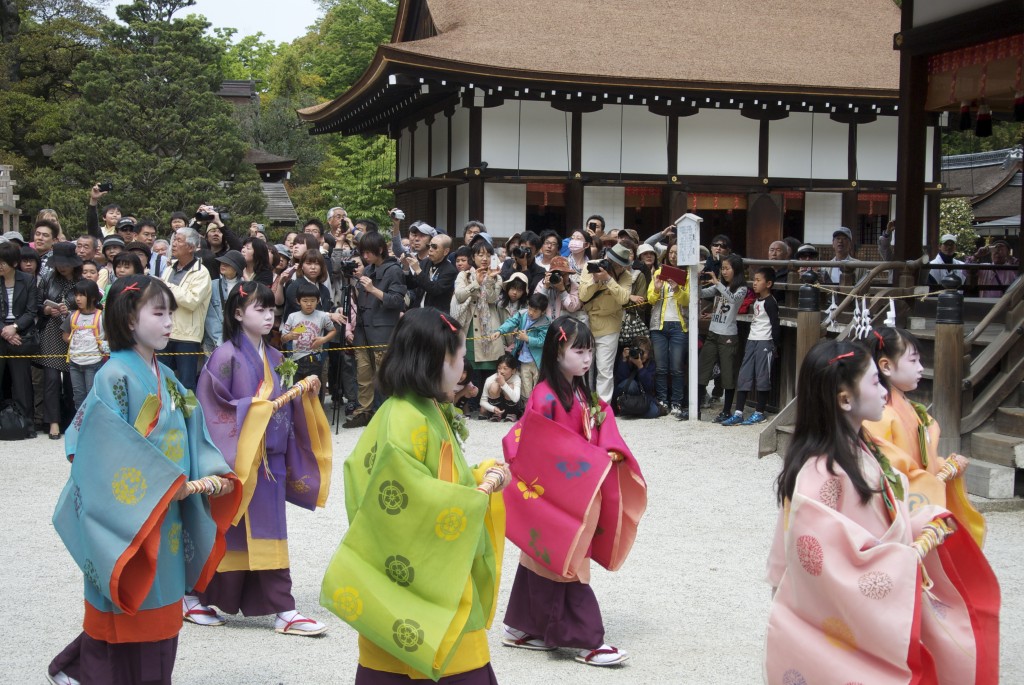
Children attendants of the Saio-dai, a picture of cuteness in their Heian-era costumes
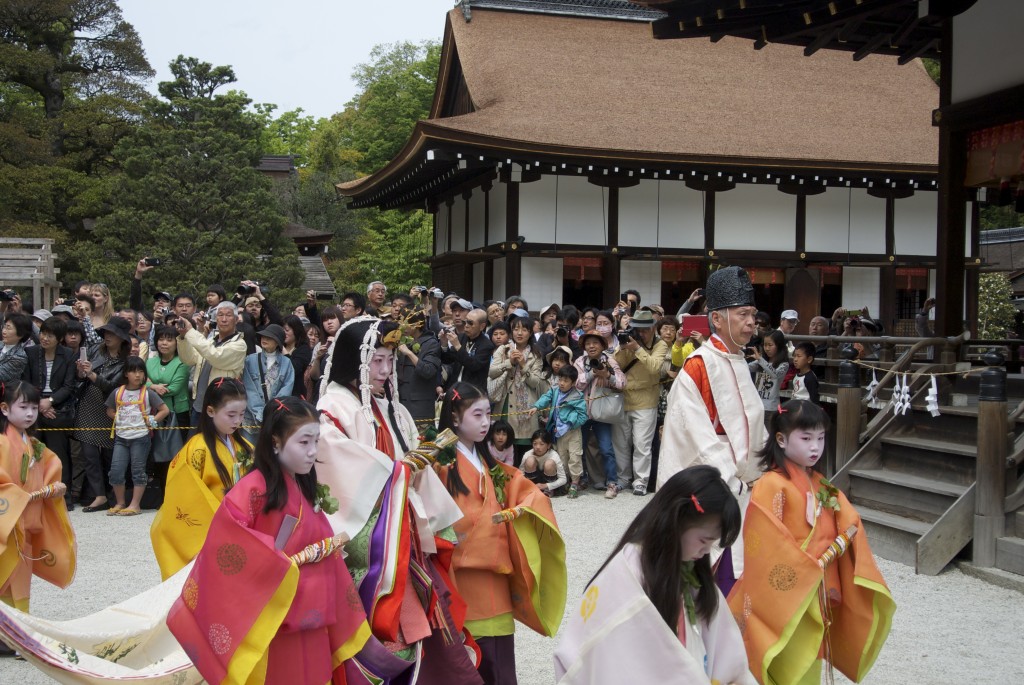
The centre of attention, the Saio-dai (played this year by Nagase Maiko from Sakyo-ku in Kyoto)
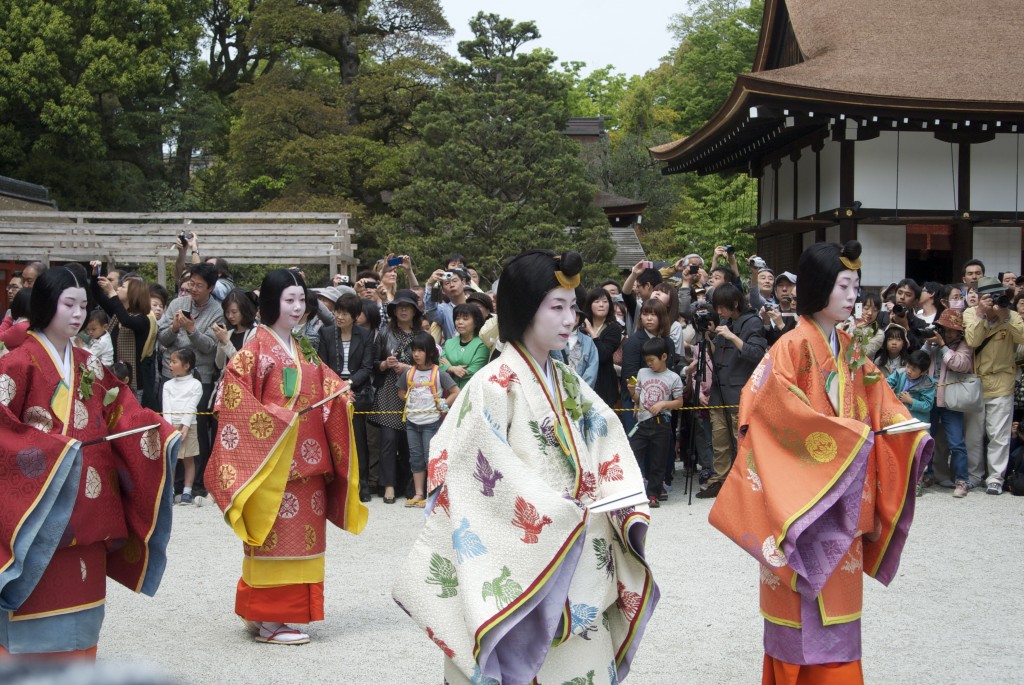
Some of the 40 attendants of the Saio-dai, reenacting ancient practice in Heian times
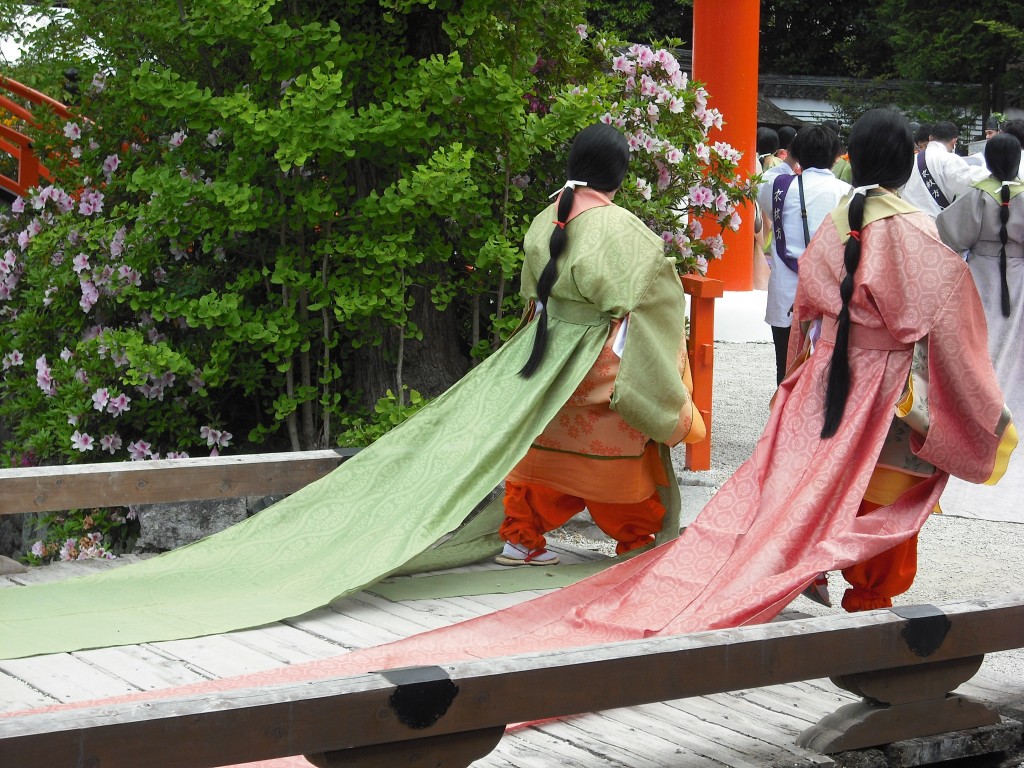
Long trains are picturesque but not always practical (one got caught in the wood of the bridge)
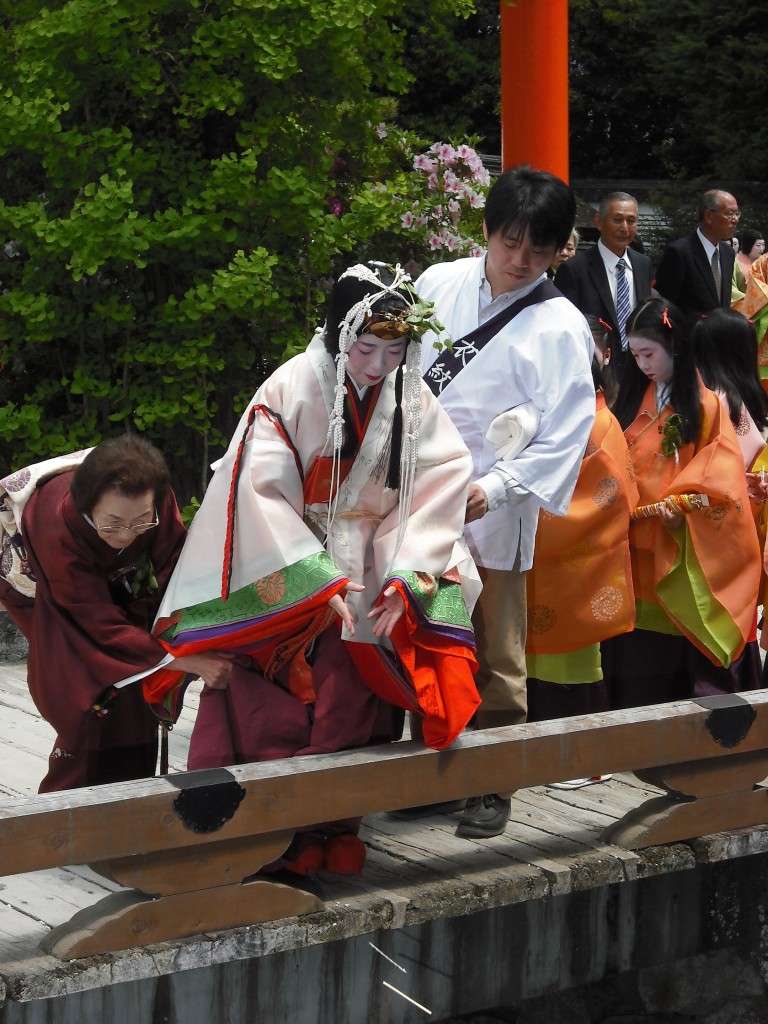
After the ritual ablutions the ritual release into the purifying waters of broken pieces of the arrow with which she had previously purified herself
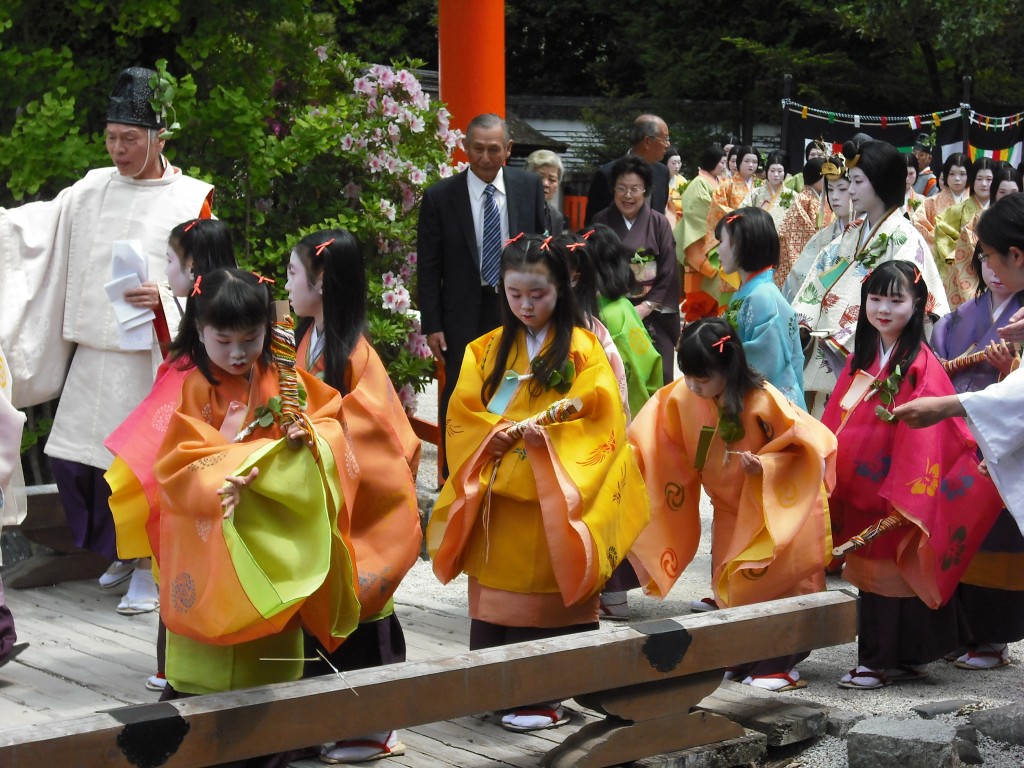
Children too perform the symbolic purification
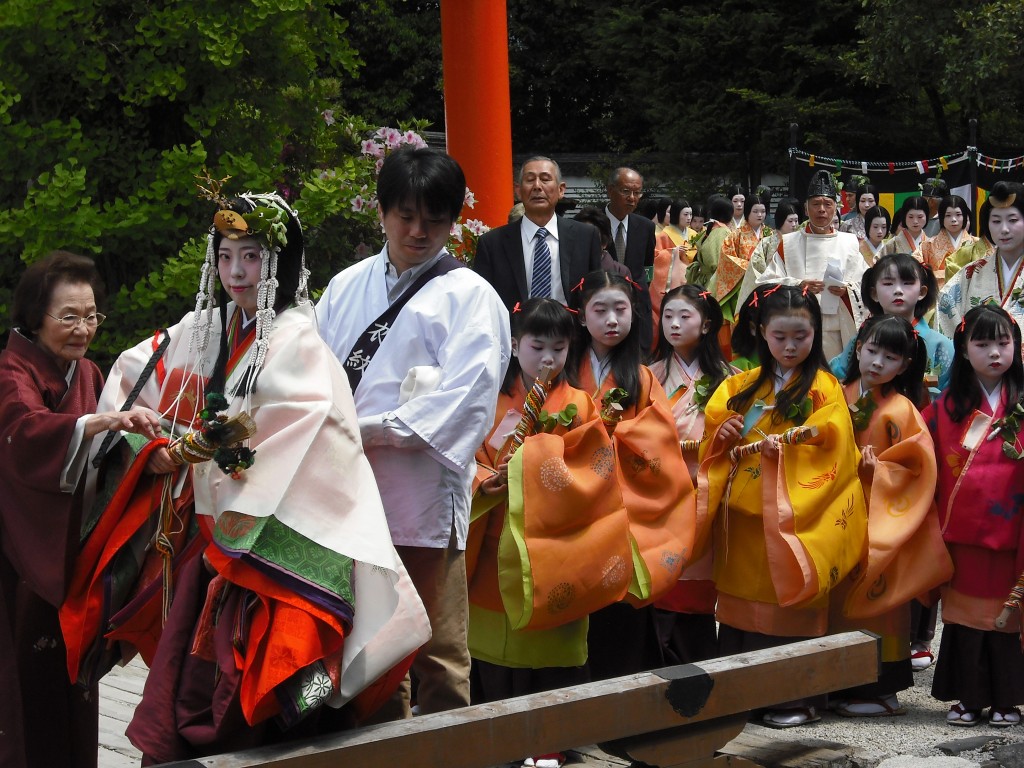
The procession returns from the Mitarashi pond to the main compound
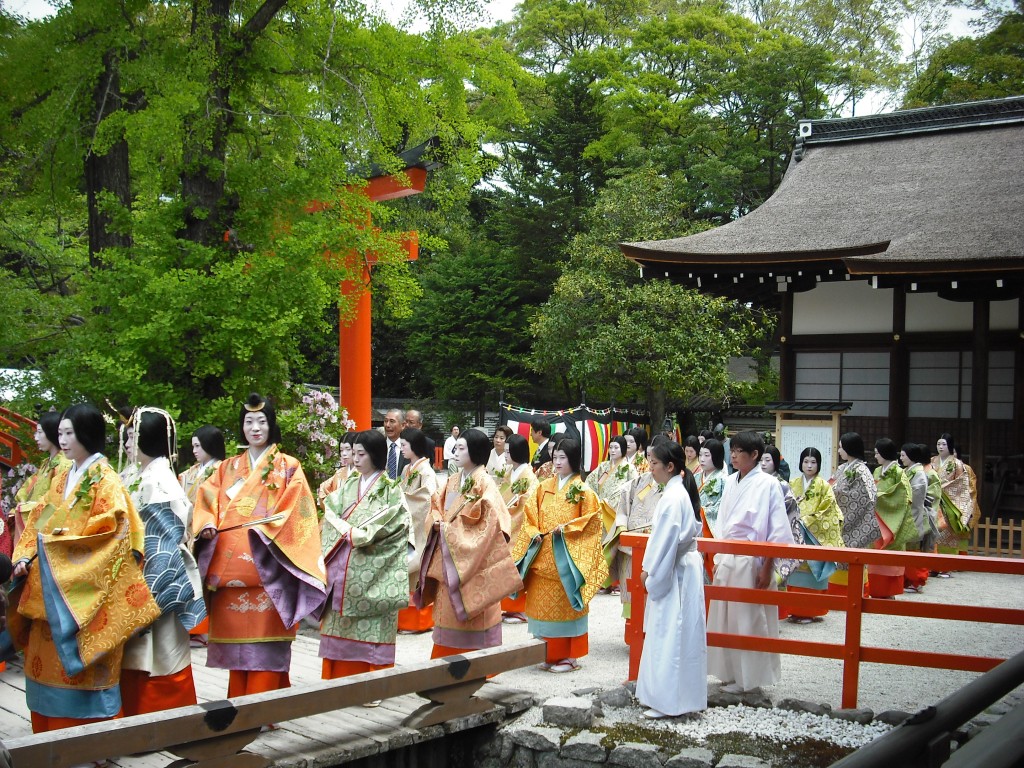
... and big smiles all round at a successful event

Leave a Reply